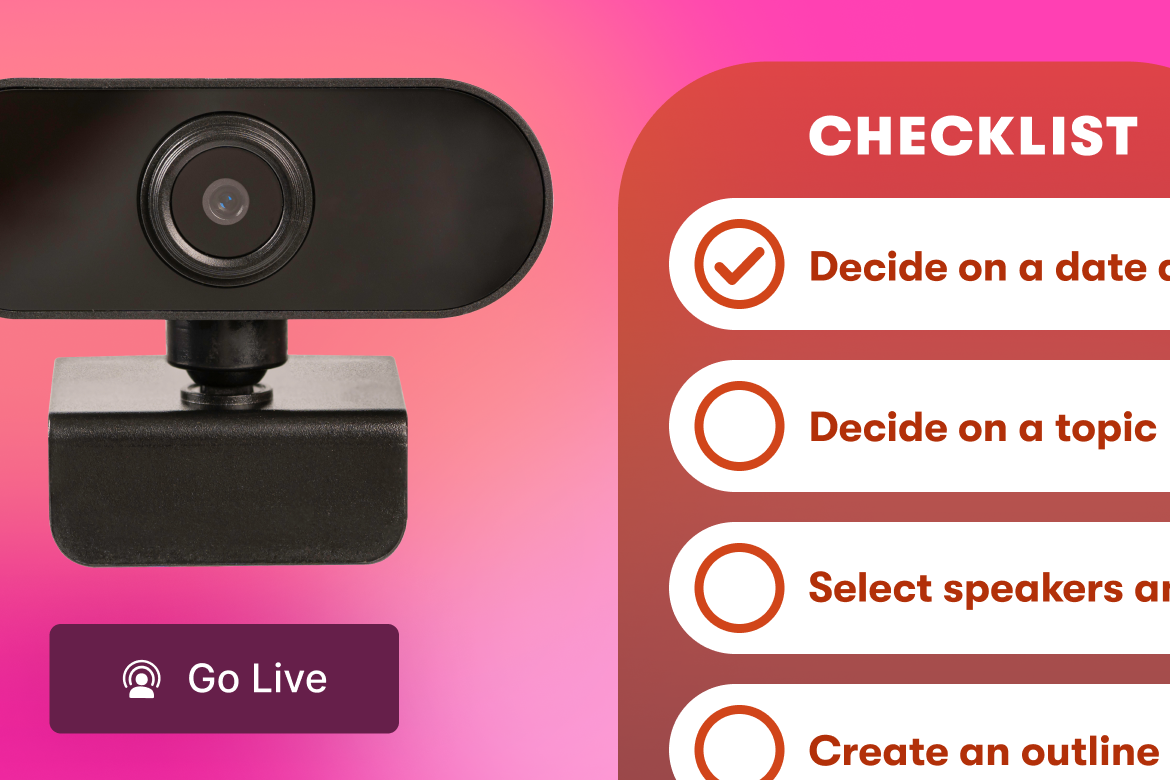What’s a Mood Board? Tips, Tools, and Examples from Wistia Studios
We’re big fans of pulling back the curtains and showing how we approach show development here at Wistia. In the past, we’ve shared our philosophy on creating a show mandate and how we greenlight new show concepts. Now, we’re excited to share how we approach show branding, starting with a classic development tool: mood boards.
More than just a collection of images, a mood board (sometimes also called an inspiration board) serves an essential role in defining and communicating the vision for your show. In this post, we’ll share essential elements for a mood board and examples of how we use mood boards for shows at Wistia.
What is a mood board?
A mood board is a collection of visuals that help convey a certain style or concept. Designers, photographers, filmmakers, and all types of creatives use mood boards to communicate the “feel” of an idea.
“A mood board is a collection of visuals that help convey a certain style or concept.”
Mood boards serve many purposes, starting with organizing the inspiration around a design project. They can be a powerful tool throughout the show development process to help keep the style and aesthetic consistent and on track with the creator or producer’s vision and goals.
Mood boards are also an excellent way to refine a show’s style before diving into the actual branding and design process. They’re a much lower investment than mockups in terms of resources and time and can convey a lot about the look and feel of the final design.
And, mood boards will ensure that all stakeholders and contributors working on a show are on the same page when working through the creative process together. One designer’s interpretation of “simple” or “colorful” might be different than a colleague’s; a mood board can align everyone under the same single vision.
What should a mood board include?
When creating a mood board for your show, you should think about these specific elements. You can include as few or as many as you like, but layering in different design elements will really help bring your concept to life.
Here are a few specific design elements to add to your mood board:
- Fonts
- Colors
- Words (that tie into your show, brand messaging, etc.)
- Images (that evoke a specific feeling, emotion, etc.)
- Videos and animations
It’s also essential to have a clear understanding of your show’s audience, format, and content to provide guardrails for your mood board. You’ll want to source inspiration that creatively threads all of these unique elements. Small details like color schemes, font choices, and set design can have a significant impact on the overall tone of your show. So choose wisely!
“A viewer should be able to look at your mood board and instantly grasp the experience you’re trying to convey.”
Another important aspect of developing a mood board is consistency. A viewer should be able to look at your mood board and instantly grasp the experience you’re trying to convey. Maybe that’s the look and feel of a specific era, a dramatic color palette, or even a specific emotion. Be specific about your vision, and hone in on these recurring elements that thread your design ideas together.
Finally, be sure to balance including enough visual elements to convey your ideas without overwhelming viewers. There’s a fine line between collecting and clutter. Don’t be afraid to cut visuals as you refine the vision for the experience you want to convey.
How do I create a mood board?
The great news is, there’s really no right or wrong way to approach mood boards. Some folks love the process of creating a physical mood board, though most mood boards for business applications are done digitally so multiple people can easily collaborate. If you’re new to design, using an app with a mood board template can be a great starting point.
Here are a few handy apps you can use to create your own digital mood boards:
- Adobe Express, PhotoShop, or Illustrator
- Canva
- Google Docs, Slides, etc.
- InVision
- Milanote
- Moodboard
The mood board creation process is incredibly flexible. Feel free to use whatever materials or apps you already have on-hand. What you’re really looking for is a blank canvas to host and organize your design ideas. And don’t be afraid to mix different types of media. This works especially well for digital boards where you can include video or audio clips to really bring your vision to life.
If a physical mood board is more your speed, no worries. Grab a foam board, some scissors, a few magazines, and go to town! Physically scouring for inspiration and building your collage can also be a great way to really immerse yourself in your final vision.
Where can I find inspiration for my show mood board?
Inspiration for your mood board can come from anywhere. To get started, peruse stock photo sites, color palette sites, design galleries, typography sites, and even social media (special shout out to Instagram and Pinterest here). You can also dip into your own personal swipe files (if you have those handy).
We asked our design team members for their favorite sources of inspiration. Here’s what they recommend:
- Adobe Color Wheel
- Behance
- Coolors.co
- Designinspiration.com
- Dribbble
- Google image search
- Typewolf
Show mood board examples
Finally, the moment you’ve been waiting for. Let’s take a look at an actual mood board from a show we produced at Wistia! We’re going to dig into the deck that our team put together for Brandwagon, an original talk show for marketers. Our design team used these mood boards to pitch three different directions for the show’s general look and feel.
Pitch 1: Retro variety show
The first pitch included clips and screenshots from classic variety shows like The Merv Griffin Show and The Gong Show. The color scheme here is more muted with warm shades of yellow, orange, and red, and the fonts are bold with thick letters and lots of curves.
Pitch 2: Late-night talk show
The second pitch took a more modern approach by highlighting late-night shows including The Tonight Show and Saturday Night Live. The fonts are more slender and sleek here, and the colors present a mix of black and blues with sharp punches of color.
Final “Brandwagon” branding
For the final Brandwagon concept, the team incorporated elements from both the modern and retro pitches. They accomplished this with bold, bright colors from our main brand palette, retro set elements like the VHS wall and classic furniture, and thick, punchy lettering. Having mood boards for each concept helped convey each pitch’s vision and open up meaningful conversations about what worked and what didn’t for the final brand.
Get inspired
We hope this post sparks your creative process and inspires you to make your own mood board! Whether you’re developing a video series or podcast, a mood board can help your team hone in on a vision for your show’s brand.






